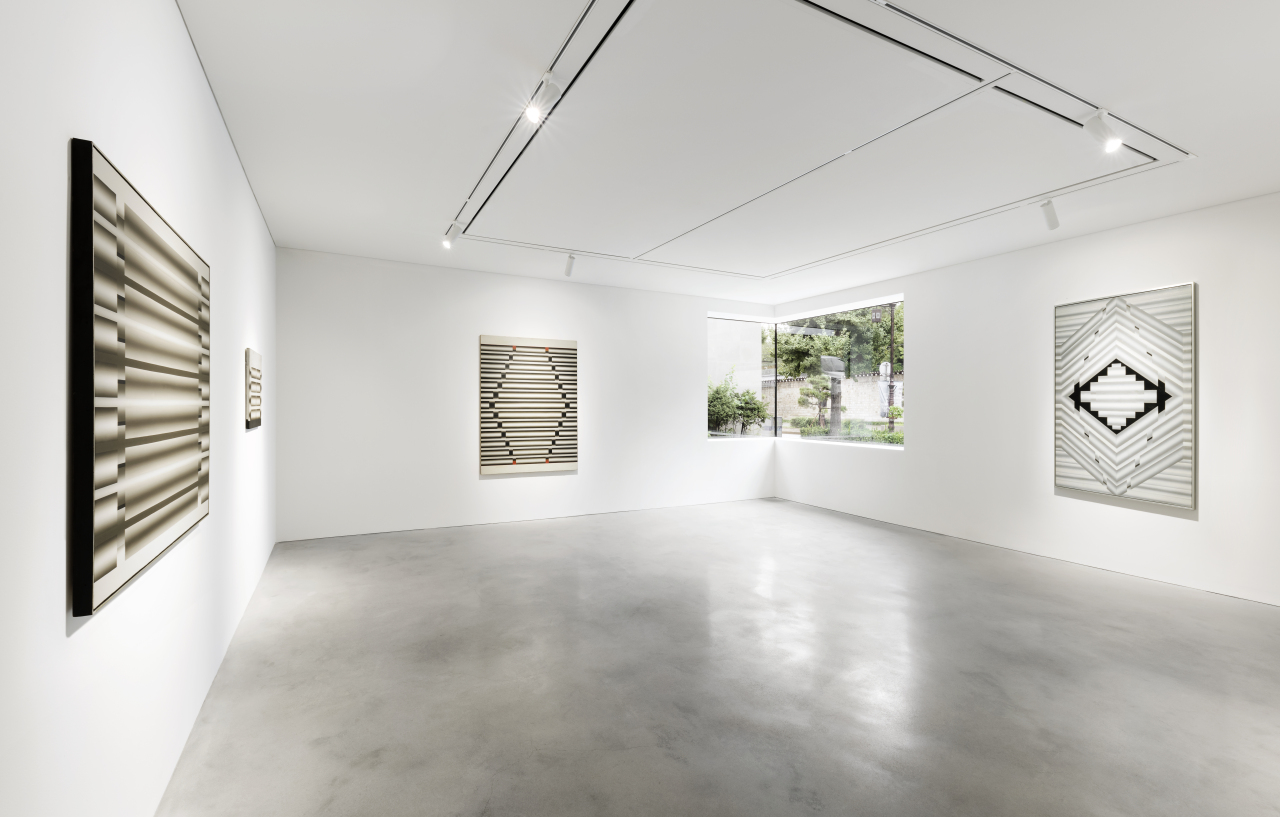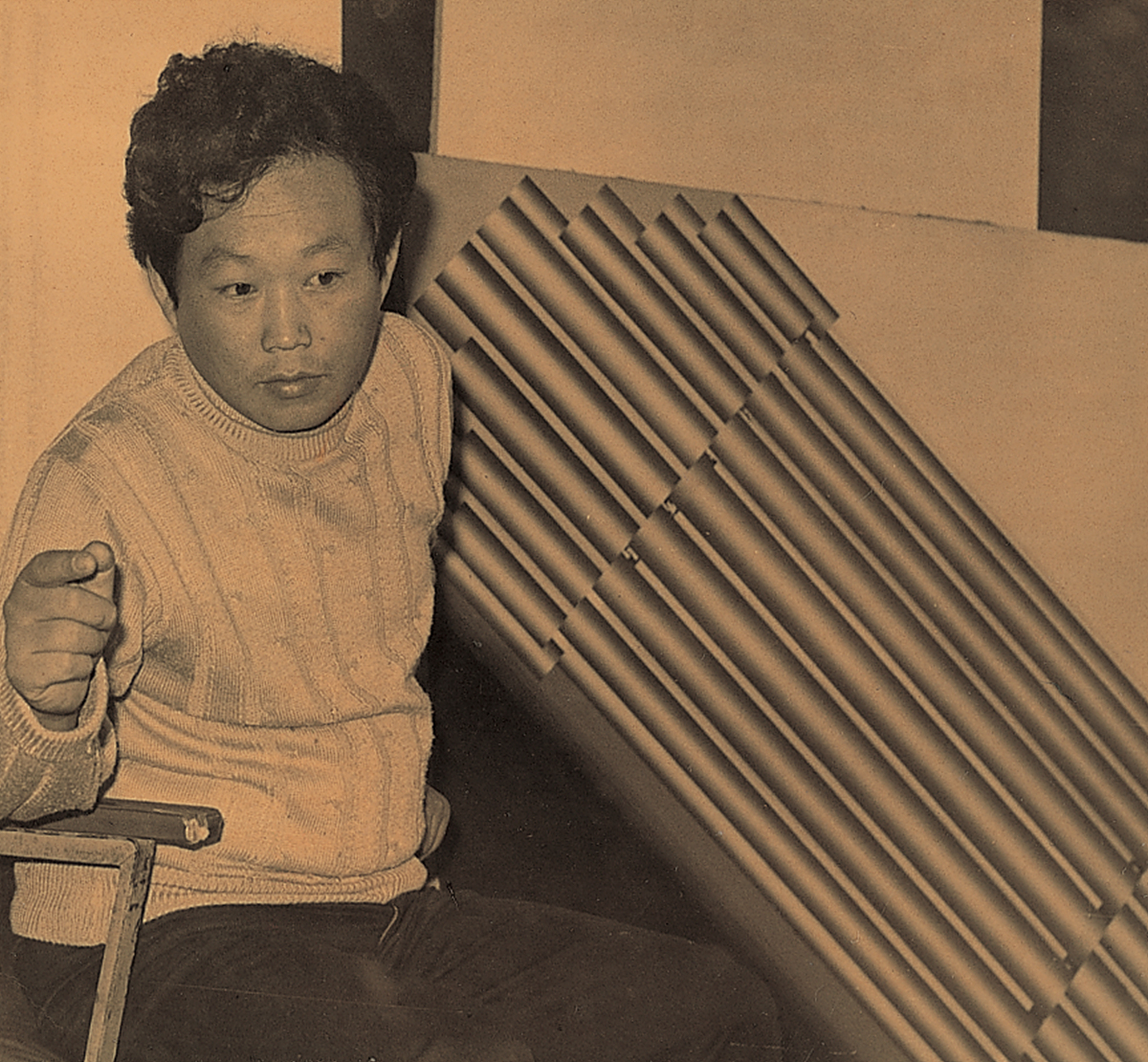Kukje Gallery signals new focus on Korean artists with Lee Seung-jio solo show
Geometric abstraction pioneer Lee led Korea's avant-garde scene
By Park YunaPublished : Oct. 10, 2022 - 17:44

A solo exhibition of Korea’s geometric abstraction pioneer Lee Seung-jio, currently showing at Kukje Gallery, traces how the late artist's unique visual language led the country's avant-garde art scene.
Lee started his “Nucleus” series early in his career, with the first work going back to 1967. The first “pipe” form, which would become a familiar motif in his later paintings, emerged in the 10th painting of the series and continued to appear in his "Nuclear" series, which occupied him until his death in 1990 at the age of 49.
His paintings were considered avant-garde in the Korean art scene where Art Informel paintings, often referred to as “hot abstract” paintings, were prevalent after the Korean War (1950-1953).
While his paintings are known as “pipelike paintings," the artist rejected the term. Lee once said that he came up with the image that flashed across his retina when he closed his eyes while traveling on a train.

His geometric abstraction series were created as Korea was gripped in the throes of rapid industrialization and the launch of NASA's Apollo spacecraft in 1966 ushered in an era of space exploration. Lee's family has described the artist as a “man who did not know math and yet so clearly saw through speed and expansiveness."
“Lee Seung Jio” at Kukje Gallery shows some 30 paintings at the K1, K2 and K3 exhibition spaces and includes archival materials such as the artist's sketches and exploration of geometry.
Lee used masking tape to outline the borders on canvas, then applied oil paint with a flat brush. By dipping light-colored paint at the center of the brush and darker hues on both sides, he was able to paint a color band with a single stroke.
Lee was one of the founding members of the avant-garde art organization Origin Group and Korean Avant-Garde Association. A recipient of multiple awards at the annual National Art Exhibition, he played a vital role as an intermediary between the avant-garde and mainstream art.
The National Museum of Modern and Contemporary Art, Korea held a large-scale retrospective of the artist in 2020, showing 90 paintings and 50 archival materials.
The exhibition at Kukje Gallery in Seoul will be shown through Oct. 30.
By Park Yuna (yunapark@heraldcorp.com)



















![[Today’s K-pop] Treasure to publish magazine for debut anniversary](http://res.heraldm.com/phpwas/restmb_idxmake.php?idx=642&simg=/content/image/2024/07/26/20240726050551_0.jpg&u=)